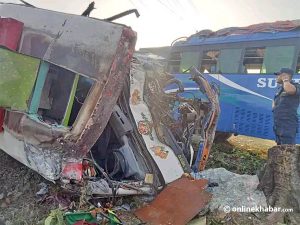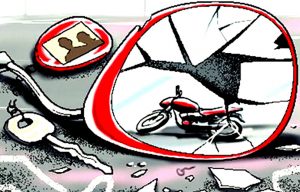High-speed driving is a key risk factor in road accidents. The high speed increases the likelihood of road crashes, higher collision impact and the severity of resulting injuries. With an increasing speed, the drivers are at a greater risk of losing control of their vehicles as they have less time to anticipate upcoming hazards. An increase in speed also leads to a decrease in the driver’s field of vision, which leads to road users having lesser time to take preventive actions.
According to the World Health Organization, 1.35 million people die from road crashes globally. Higher speeding is estimated to be responsible for half of the total deaths (i.e. 650,000 people). Similarly, 22 million people are estimated to be injured annually because of speeding. In developed countries, speeding comprised 30% of the total road traffic crashes, and for low and middle-income countries, it is more than 50%. Similarly, it was projected that without sustained initiatives, more than 50 million people will die on roads and 500 million will get injured in road crashes between 2001 and 2050.
Because road accidents are almost a daily affair in Nepal, the country now needs to prioritise speed management so that the death rate can significantly come down.
Stress on speed management
Researchers have found that a driver could react even in one second and respond in between 1.5 to 4 seconds. During those 1.5 and 4 seconds, the driver passes three stages (perception, reception, and barking). Assuming that a vehicle is travelling at 50km/hr and a child is 15 metres in front of the vehicle, there is no possible way for the vehicle to come to an instantaneous stop before hitting the child. However, if the vehicle moves at 30km/hr, it can stop just two metres ahead of the child.
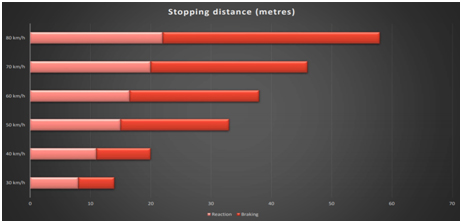
This figure highlights the importance of speed management to reduce road crashes. The World Health Organization’s findings present that 40-50% of people drive above the speed limit. Even a small reduction in driving speed has a significant impact on crash reduction. It has been experimentally verified that every 1km/h increment in speed of the vehicle results in a 5% increment in fatal crashes.
Similarly, research findings have also revealed that the likelihood of surviving in the road crashes from 30km/hr will be 90%, whereas, for 50km/hr, it will be only 10%; we can only imagine the consequences for speeds above 90km/hr. Most of the vulnerable road users (motorcyclists, cyclists, and pedestrians) are at a higher risk of speed-related crashes because they have a minimum safety harness. The following figure explains the relationship between the probabilities of death for a pedestrian and colliding with a vehicle by the speed limit.
Some states of the USA raised the speed limits from 88k/hr to 104 km/hr in 1987 and 1988. This increased speed resulted in a 25% increase in road traffic deaths. In contrast, in New Zealand, the government reduced the rural speed limit from 88km/hr to 80km/hr, resulting in a 37% reduction in deaths, 24% in serious injuries, and 22% in minor injuries. Studies from India show that the small and lightweight vehicles operating at a limited speed in the urban environment have resulted in fewer crashes and low road traffic deaths. Similarly, Greece achieved a 45% reduction in road traffic crashes in a decade (2010-2019) with strong enforcement of road safety laws.
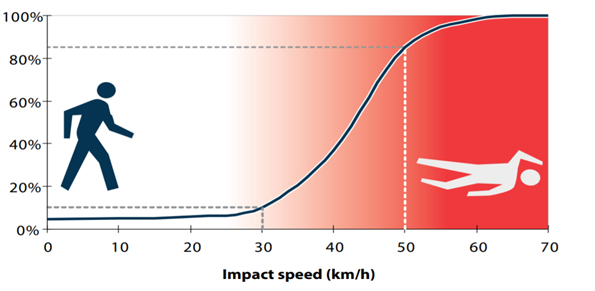
Nepal’s context
In Nepal, even though both the vehicles and the roads are not designed for higher speed, vehicles are frequently driven over the speed limit, which is something that has made our streets extremely unsafe and prone to speed-related crashes. Crashes in the Kathmandu valley only account for 48% of the total road crashes of Nepal. Similarly, a recent report published by the World Bank highlighted that a significant proportion of road traffic deaths and injuries were caused by speeding in Nepal, with cities/towns carrying the major loads.
Although there is no scientific evidence from Nepal regarding the reasons for over-speeding, some of the factors associated with vehicle speeding are:
- Weak enforcement of the speed limit
- Driver-related factors (age, gender, alcohol level, pressure, hurry)
- Road and vehicle power (Road layout, road surface quality, vehicle power, maximum limit)
- Traffic and environment (Traffic density, prevailing speed limit, weather condition)
- Immediate reward (Shorter journey)
- Overconfidence (Some drivers think they have the good driving skill and prefer speeding)
- Competition in driving
Similarly, the interventions identified for speed management are:
- Ensure strict enforcement of speed limit
- Install technologies to hold drivers and vehicles in a limit speed
- Reward safe driving
- Reward safe road users
- Build and modify roads
- Install speed detection cameras
- Impose speed limit as per weather conditions
- Design transition zone
- Launch mass campaign on the speed reduction
Regarding the importance of speed management for crash reduction, the 3rd Global Ministerial Conference on Road Safety in 2020 in Stockholm set two speed-related recommendations among Nine recommendations. On behalf of Nepal, Minister of Physical Infrastructure and Transport Basanta Kumar Nembang expressed his commitment to addressing the recommendations on:
- Low speeding: protecting road users from crash forces beyond the limits of human injury tolerance
- 30km/hr: mandating a 30 km/h speed limit in urban areas to prevent serious injuries and deaths to vulnerable road users when human errors occur
What next?
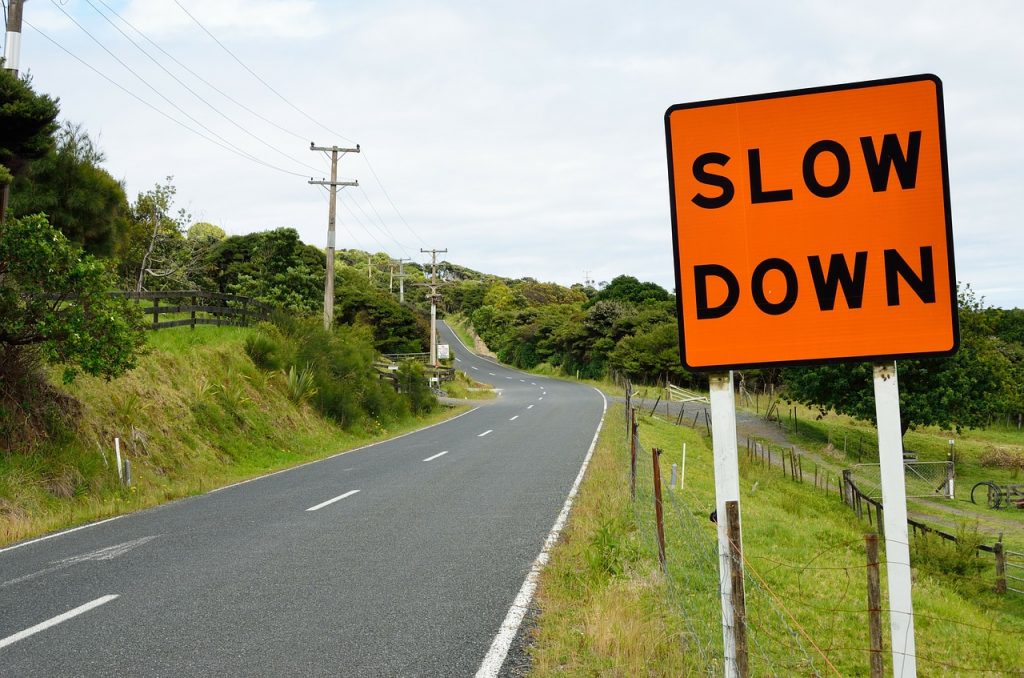
Following the Stockholm recommendations, “Streets for Life” is the slogan chosen for the 6th United Nations Global Traffic Safety Week. The safety week, which was celebrated between May 17 and 23 this year, was a perfect opportunity to call for 30 km/h (20 mph) speed limits to be the norm for cities, towns and villages worldwide.
Moreover, Nepal has already introduced Motor Vehicles and Transport Management (Third Amendment) Rules, 2009; in which the speed limit of the vehicles are:
- Car, SUV, van and pick-up truck: a maximum of 80 kilometres per hour
- Tempo, scooter, power tiller and tractor: a maximum of 40 kilometres per hour
- Motorcycle: A maximum of 50 kilometres per hour
- Bus, mini bus, truck and mini truck: a maximum of 50 kilometers per hour on a hilly road and a maximum of 70 kilometres per hour on a plane/surface road
However, most of our urban road users are vulnerable road users (motorcyclists, cyclists, and pedestrians), and about 85% of the vehicles moving on urban roads are motorcycles. Therefore, these rules need to be revised, and the speed of the vehicles moving on the roads are required to be set as per global recommendations.
The most important aspect of speed management is the strict enforcement of speed limits through engineering measures and police action or automatic speed detection using cameras. Therefore, everyone (policymakers, program designers and implementers, users) should keep in mind that speed management is a fundamental component of a successful road safety strategy.







